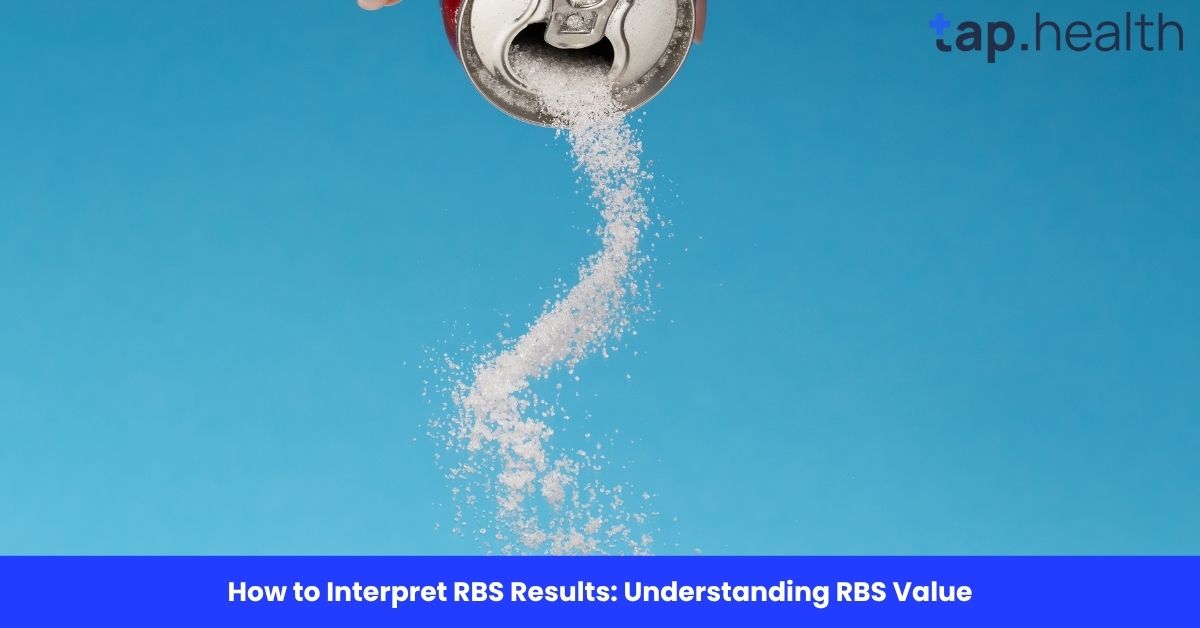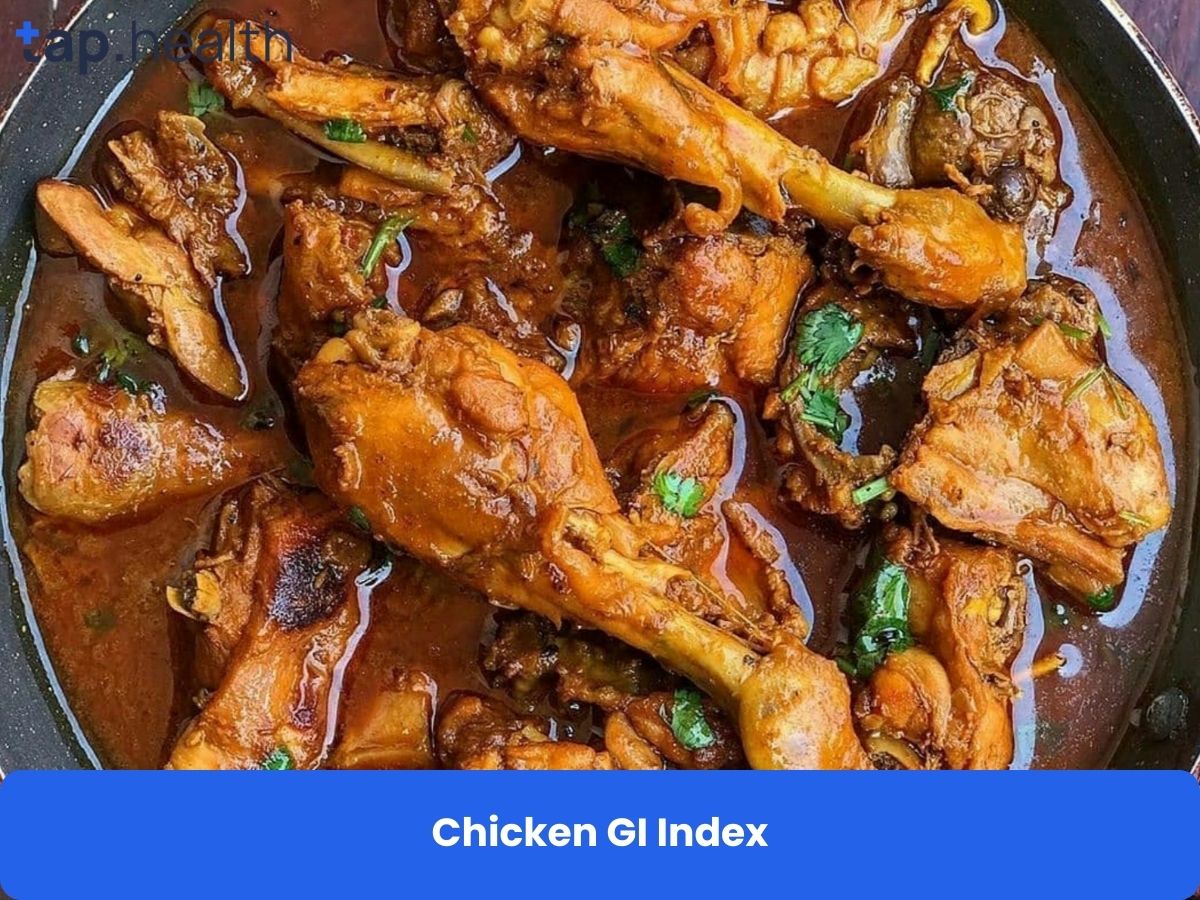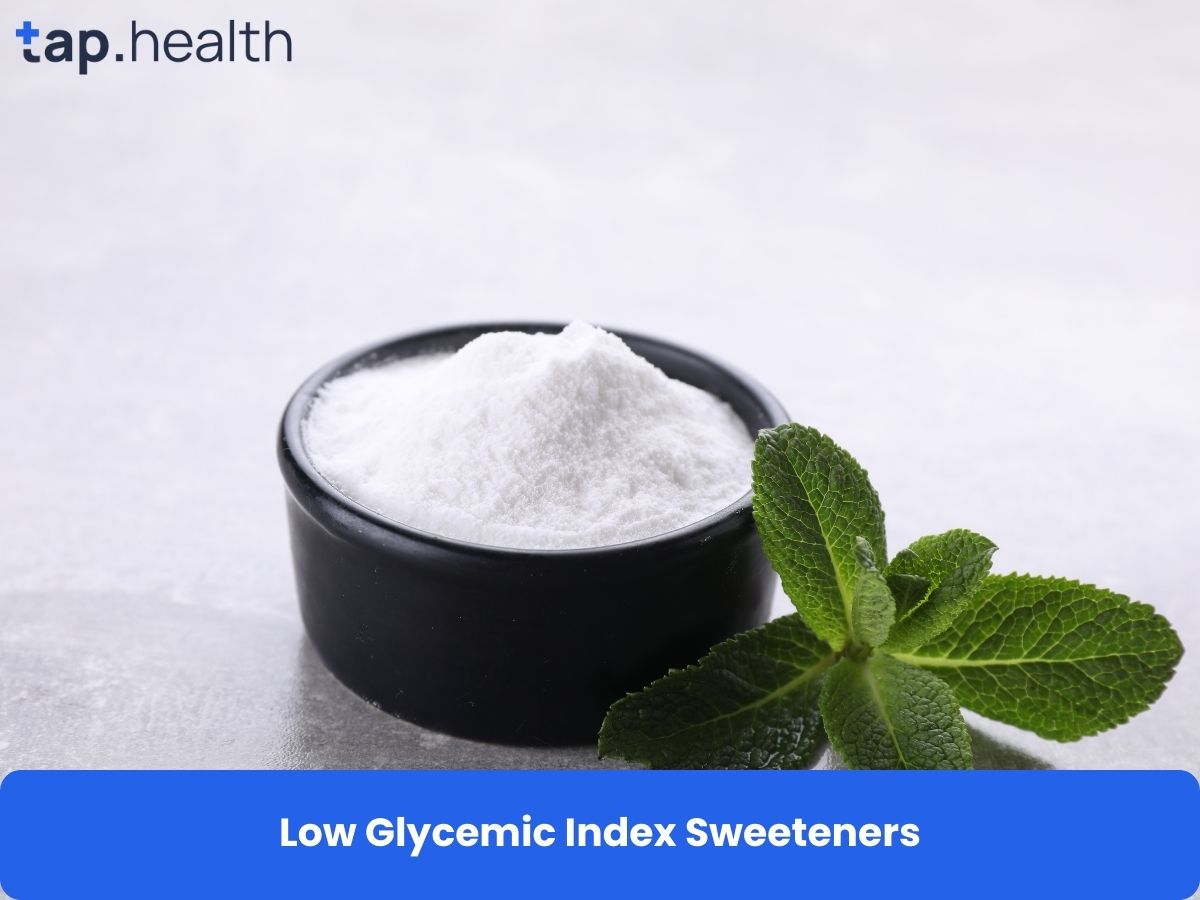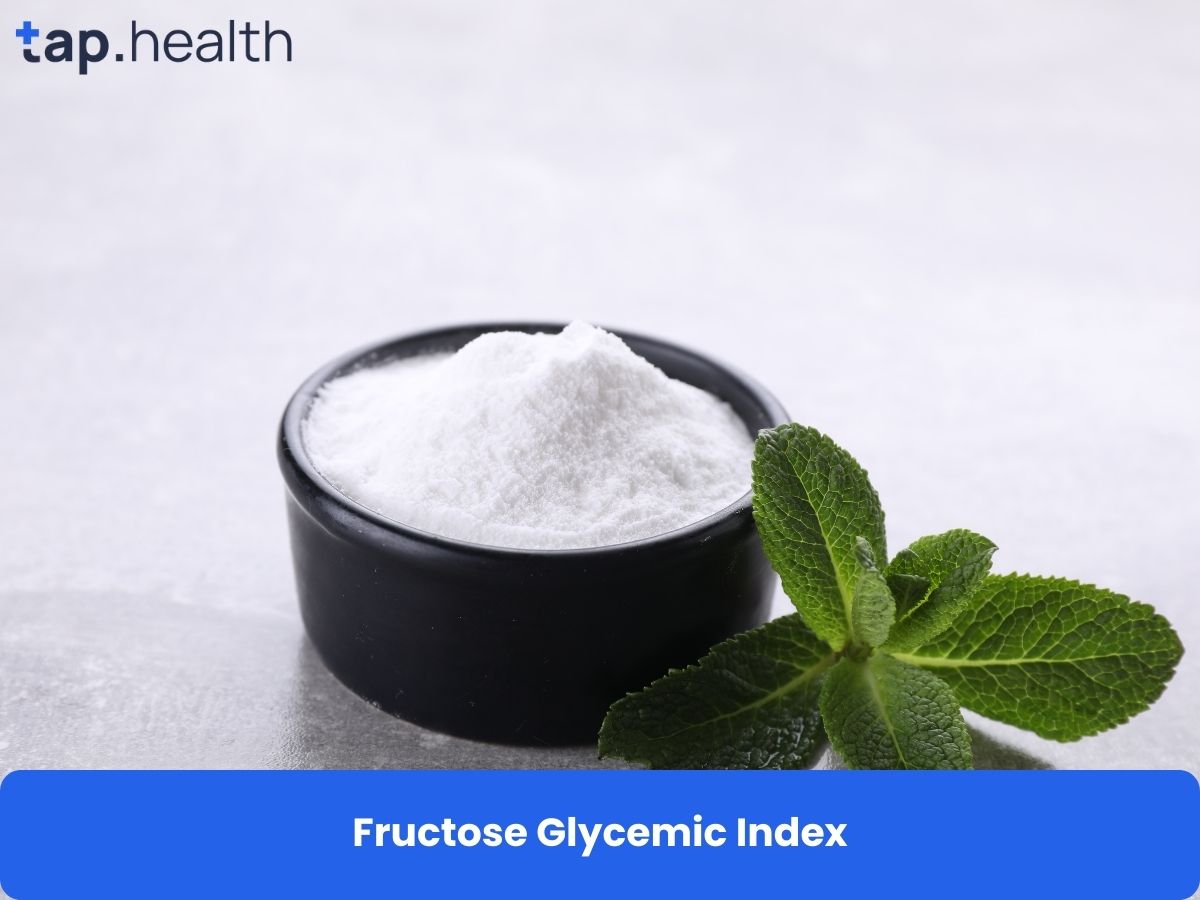If you’ve just had a blood test and are holding a report with something called ‘RBS Value’ on it, you might be feeling a little confused, even a little worried. It’s natural! Medical reports, with their long names and numbers, often feel like they’re written in a different language.
But don’t stress! The Random Blood Sugar (RBS) test is a very common test, and understanding your result is actually quite simple. We’re going to break down everything about the RBS test .
Think of this as your friendly neighbourhood guide to understanding what that RBS number means for you.
What Exactly is the RBS Test?
The full form of RBS is Random Blood Sugar or Random Blood Glucose. It is one of the most common and quick tests doctors use to check the amount of glucose (sugar) floating in your blood at a specific, random moment in time.
Why is it Called ‘Random’?
The key word here is ‘Random’. Unlike the Fasting Blood Sugar (FBS) test, where you must not eat anything for 8-10 hours, or the Post-Prandial (PPBS) test, which is taken exactly two hours after a meal, the RBS test can be taken at any time of the day, regardless of when you last ate.
It gives your doctor a simple, immediate “snapshot” of your blood sugar level right then and there. This convenience is why it’s a popular choice for quick screenings, especially if you walk into a clinic with symptoms suggesting high blood sugar.
Why Do Doctors Ask for an RBS Test?
The main reason for this test is to screen for or help diagnose diabetes and prediabetes. It’s a quick way to check if your blood sugar is dangerously high or low, especially if you have symptoms like:
-
Feeling very thirsty (Polydipsia).
-
Urinating frequently (Polyuria).
-
Feeling extremely tired or fatigued.
-
Having blurry vision.
-
Unexplained weight loss.
It’s also used for people already diagnosed with diabetes to monitor how well their treatment plan (diet, exercise, and medicine) is working.
Interpreting RBS Results: The Magic Numbers
Now for the part you are really here for: understanding the numbers on your report. The RBS value is usually measured in milligrams per deciliter ($\text{mg/dL}$). Sometimes, it might be in millimoles per litre ($\text{mmol/L}$), but $\text{mg/dL}$ is more common in India.
Here is a simple table, based on international and Indian medical guidelines, to help you interpret your RBS result.
| RBS Value (mg/dL) | Interpretation | What It Means for Your Health |
| Less than 140 | Normal (Healthy Range) | Your body is managing blood sugar well at this moment. |
| 140 to 199 | Prediabetes (Impaired Glucose Tolerance) | Your blood sugar is higher than normal but not high enough to be called diabetes. This is a warning sign! You are at high risk of developing full-blown diabetes. |
| 200 or Higher | Diabetes Mellitus | This result, especially with classic symptoms like extreme thirst or frequent urination, strongly suggests you have diabetes. Further tests (like $\text{FPG}$ and $\text{HbA1c}$) will be needed to confirm the diagnosis. |
Important Note: These ranges are generally accepted. However, always remember that only a doctor can give you a final diagnosis. Lab reference ranges can also vary slightly.
Diving Deeper: What Do the Different Levels Indicate?
Understanding the normal range is just the first step. Let’s look closely at what it means when your result is too low, normal, or too high.
1. Normal RBS Value (Less than $140\ \text{mg/dL}$)
If your RBS is less than $140\ \text{mg/dL}$, congratulations! This is a healthy reading, and it shows that your body’s control system for blood sugar (mostly involving the hormone insulin) is working correctly.
Action Required: Keep up your healthy lifestyle. Regular exercise, a balanced Indian diet (low on processed foods, high on fibre), and maintaining a healthy weight are your best friends. Continue getting regular checkups, especially if diabetes runs in your family.
2. Prediabetes RBS Value ($140$ to $199\ \text{mg/dL}$)
This is a critical range. If your RBS falls here, it means you have Prediabetes. Think of this as a yellow light on the traffic signal—it’s a warning, not a full stop, but you must slow down and take immediate action.
Prediabetes is when your body has started resisting insulin or your pancreas isn’t making enough of it. It’s serious because, without making lifestyle changes, most people with prediabetes develop Type 2 diabetes within five to ten years.
Action Required: This is your chance to reverse the process!
-
Consult your doctor: They may ask for other tests (like Fasting Glucose or $\text{HbA1c}$) to get a complete picture.
-
Massive Lifestyle Changes: This is non-negotiable. Start a regular exercise routine (a brisk walk for 30-45 minutes daily is a great start), lose weight, and focus on a low-sugar, high-fibre diet.
3. Diabetes RBS Value ($200\ \text{mg/dL}$ or Higher)
An RBS value of $200\ \text{mg/dL}$ or more, especially when you are also showing classic diabetes symptoms (like extreme thirst and frequent urination), is a strong indicator of Diabetes Mellitus.
Action Required: You need to see a doctor (an endocrinologist or a general physician) immediately.
-
Confirmation Tests: Your doctor will order other blood tests to confirm the diagnosis, like $\text{HbA1c}$ (which shows your average blood sugar for the past 2-3 months) and Fasting Plasma Glucose ($\text{FPG}$).
-
Treatment Plan: Once confirmed, the doctor will start you on a treatment plan, which may involve medication, insulin, and a detailed diet and exercise schedule.
Can RBS Be Too Low? Understanding Hypoglycemia
While we often focus on high blood sugar, the RBS test can also reveal if your blood sugar is too low. This condition is called Hypoglycemia.
What is a Low RBS Value?
Generally, a blood sugar level below $70\ \text{mg/dL}$ is considered low, or hypoglycemic.
What Causes Low Blood Sugar?
Low RBS is common in people with diabetes who are on certain medications, especially insulin, and if they:
-
Take too much medication.
-
Skip a meal or eat too little.
-
Exercise much more than usual.
For people who do not have diabetes, low blood sugar is much rarer, but it can be a sign of:
-
Certain medications (like quinine).
-
Excessive alcohol consumption.
-
Severe illnesses or hormone deficiencies.
Symptoms of Low Blood Sugar (Hypoglycemia)
If your RBS is low, you might feel symptoms like:
-
Feeling shaky or nervous.
-
Sweating and chills.
-
Dizziness or light-headedness.
-
Confusion or difficulty concentrating.
-
Extreme hunger.
Action Required: If you are experiencing these symptoms and your sugar is below $70\ \text{mg/dL}$, you need to act fast!
-
Consume 15 grams of a fast-acting carbohydrate (like 3-4 glucose tablets, half a cup of fruit juice, or 1 tablespoon of sugar/honey).
-
Wait 15 minutes and check your blood sugar again. Repeat if it is still below $70\ \text{mg/dL}$.
-
If you are on diabetes medication, inform your doctor so they can adjust your dose.
What Factors Can Affect Your RBS Value?
Because the RBS test is taken at a “random” time, the result can be influenced by many things happening in your body and your daily routine. This is a very important point for correct interpretation!
1. The Power of Your Last Meal
This is the biggest factor. Since you don’t fast for the test, if you had a large, high-carbohydrate meal (think a big plate of rice, a sugary drink, or a sweet) just an hour or two before the test, your RBS value will naturally be higher. A high value due to a recent meal is not the same as a consistently high value caused by diabetes.
2. Physical Activity
If you did strenuous exercise right before the test, your blood sugar could be lower than usual, as your muscles would have used up a lot of glucose. Conversely, too little activity can lead to higher sugar levels.
3. Stress and Illness
When you are stressed (be it emotional stress or physical stress from an infection, fever, or injury), your body releases stress hormones like cortisol. These hormones tell your liver to produce more sugar, which can temporarily increase your RBS value.
4. Medications
Certain medicines, like steroids (often used for allergies or pain), can temporarily spike your blood sugar. Always tell your doctor about all the medicines you are taking.
5. Dehydration
If you are severely dehydrated, the concentration of sugar in your blood can appear higher than it actually is. Drinking enough water is crucial!
Next Steps: When RBS is High, What Tests Come Next?
If your RBS is high (especially $\ge 200\ \text{mg/dL}$), your doctor will rarely diagnose you with diabetes based on this one test alone. They will recommend follow-up tests for a confirmed diagnosis
1. Fasting Plasma Glucose (FPG)
This test requires you to fast for at least 8-10 hours. It’s a very reliable measure of your sugar control when your body is at rest.
-
Diagnosis: $\text{FPG} \ge 126\ \text{mg/dL}$ on two separate occasions suggests diabetes.
2. $\text{HbA1c}$ Test (Glycated Hemoglobin)
This is a critical test. The $\text{HbA1c}$ test measures the average amount of sugar attached to your red blood cells over the past two to three months. It gives a long-term picture and is not affected by what you ate yesterday.
-
Diagnosis: An $\text{HbA1c}$ level of $6.5\%$ or higher suggests diabetes.
3. Oral Glucose Tolerance Test (OGTT)
In this test, your sugar is checked first while fasting, and then you are given a sugary drink. Your blood sugar is checked again after two hours to see how well your body handles the sugar load.
-
Diagnosis: A 2-hour result of $\ge 200\ \text{mg/dL}$ suggests diabetes.
Your Action Plan: Don’t Panic, Take Charge!
Remember, an RBS value is just a number in a report. It’s not a verdict. If your result is in the concerning range ($\ge 140\ \text{mg/dL}$), use it as a powerful call to action.
-
See Your Doctor: They are the experts and will guide you through the next steps and follow-up tests.
-
Focus on Lifestyle: Diet and exercise are powerful medicines. Even small changes, like cutting down on sugary tea or taking a 20-minute walk after dinner, can make a huge difference in managing your blood sugar.
-
Educate Yourself: The more you know about your condition (be it prediabetes or diabetes), the better you can manage it.
In India, diabetes is a growing health concern, but with early detection (which the RBS test helps with) and proactive management, you can live a long, healthy, and fulfilling life. Take charge of your health today!
Real-Life Scenario
For example, imagine a person who often feels tired and thirsty throughout the day. A quick RBS test at work shows 185 mg/dL, which falls in the prediabetic range. This early detection allows them to make timely dietary and lifestyle changes, preventing future complications.
Expert Contribution
Endocrinologists and diabetologists emphasize that RBS testing is a screening tool, not a standalone diagnostic test. They recommend confirming elevated results with fasting blood sugar (FBS) or HbA1c tests for accurate diagnosis and management planning.
Recommendations Grounded in Proven Research and Facts
-
Maintain a balanced diet rich in fiber, lean proteins, and complex carbohydrates.
-
Engage in at least 150 minutes of moderate exercise weekly.
-
Get your blood sugar checked regularly, especially if you have a family history of diabetes.
-
Studies show that early lifestyle modification can reduce diabetes risk by over 58% in prediabetic individuals
Frequently Asked Questions (FAQ) on How to Interpret RBS Results: Understanding RBS Value
What is the normal range for RBS in India?
The generally accepted normal range for Random Blood Sugar (RBS) is less than $\mathbf{140\ \text{mg/dL}}$ (milligrams per deciliter), regardless of when you last ate. A reading in this range indicates that your body is effectively regulating blood sugar levels.
Is an RBS of $150\ \text{mg/dL}$ high?
Yes, an RBS of $150\ \text{mg/dL}$ is considered higher than the normal healthy range (less than $140\ \text{mg/dL}$). According to guidelines, a value between $140\ \text{mg/dL}$ and $199\ \text{mg/dL}$ falls into the Prediabetes category. You should consult a doctor, as this indicates an increased risk for developing Type 2 diabetes and requires lifestyle changes.
Can an RBS value of $220\ \text{mg/dL}$ mean I have diabetes?
An RBS value of $200\ \text{mg/dL}$ or higher, especially when a person is also experiencing classic diabetes symptoms like frequent urination and excessive thirst, is highly suggestive of diabetes. However, a doctor will typically require a confirmatory test, such as the Fasting Plasma Glucose ($\text{FPG}$) or $\text{HbA1c}$ test, on a separate day to officially diagnose diabetes.
Do I need to fast before an RBS test?
No, you do not need to fast before a Random Blood Sugar (RBS) test. The test is specifically designed to be performed at any random time, whether you have eaten recently or not. The purpose is to get a ‘casual’ measurement of your blood sugar level at that particular moment.
What is the difference between RBS, $\text{FPG}$, and $\text{PPBS}$?
| Test Name | Full Form | Preparation | What It Measures |
| RBS | Random Blood Sugar | No fasting needed | Blood sugar at any random time. |
| FPG | Fasting Plasma Glucose | Fasting for 8-10 hours | Blood sugar when your body is at its resting baseline. |
| PPBS | Post-Prandial Blood Sugar | Taken exactly 2 hours after a meal | How well your body processes the sugar from the meal. |
How accurate is the RBS test for diagnosing diabetes?
The RBS test is a great screening tool and is very useful in emergency or symptomatic situations. If an RBS value is $\ge 200\ \text{mg/dL}$ and you have diabetes symptoms, it’s a strong indicator. However, due to its random nature, a single high result can be influenced by recent food or stress. Therefore, for a definitive diagnosis of diabetes, a doctor will almost always confirm the result with a more stable test like the $\text{FPG}$ or $\text{HbA1c}$.



